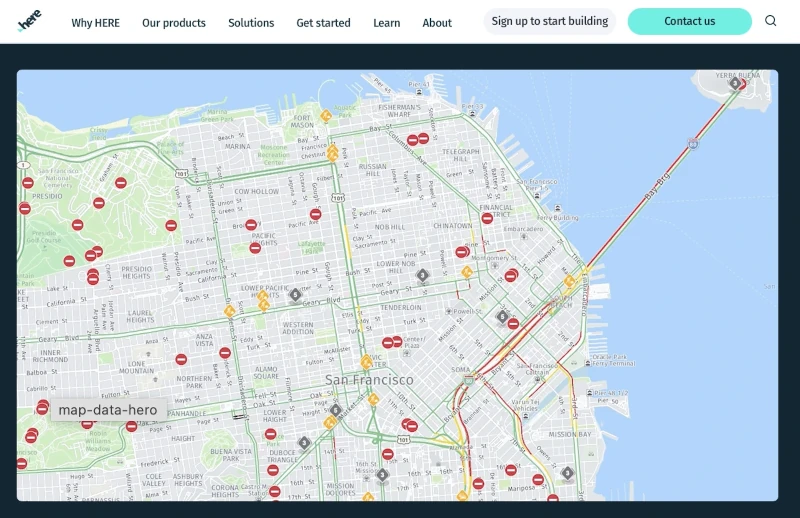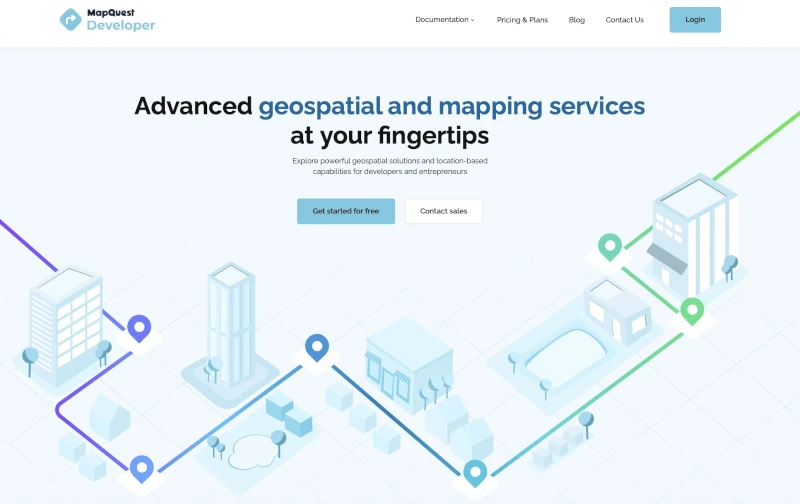

- BLOG
The Ultimate Guide to Routing APIs
Published: August 22, 2025
Route Optimization API
Optimize routing, task allocation and dispatch
Distance Matrix API
Calculate accurate ETAs, distances and directions
Directions API
Compute routes between two locations
Driver Assignment API
Assign the best driver for every order
Routing & Dispatch App
Plan optimized routes with 50+ Constraints
Product Demos
See NextBillion.ai APIs & SDKs In action
AI Route Optimization
Learns from Your Fleet’s Past Performance
Platform Overview
Learn about how Nextbillion.ai's platform is designed
Road Editor App
Private Routing Preferences For Custom Routing
On-Premise Deployments
Take Full Control of Your Maps and Routing
Trucking
Get regulation-compliant truck routes
Fleet Management
Solve fleet tracking, routing and navigation
Middle Mile Delivery
Optimized supply chain routes
Construction
Routes for Construction Material Delivery
Oil & Gas
Safe & Compliant Routing
Food & Beverage
Plan deliveries of refrigerated goods with regular shipments
Table of Contents

In today’s hyper-connected world, Routing APIs are powering everything from ridesharing apps to international supply chain operations. These APIs handle route calculation, travel time prediction, traffic avoidance, and waypoint optimization that are all essential for modern mobility solutions. Choosing the right routing API is critical for any application that needs to calculate directions, optimize journeys, or manage logistics.
Developers have multiple choices including the Google Routes API, HERE Routing API, and MapQuest API. In this guide, we’ll explore what each API offers, their strengths and limitations, real-world usage examples, pricing considerations, and code examples to help you decide which API fits your needs.
A Routing API is a cloud-based service that calculates the best route between two or more points. It’s not just about finding the shortest distance; it’s about finding the most efficient, context-aware path using real-time traffic data, historical patterns, and constraints.
Core capabilities of a Routing API:
The Google Routes API is part of the Google Maps Platform and is ideal for developers building applications that need reliable and precise routing capabilities.
Key Features:
GET
https://routes.googleapis.com/directions/v2:computeRoutes
?origin=Berlin
&destination=Munich
&travelMode=DRIVE
&trafficModel=best_guess
&key=YOUR_API_KEY
{
"routes": [
{
"distanceMeters": 584000,
"duration": "PT5H50M",
"polyline": "...",
"legs": [
{
"startLocation": { "latLng": { "latitude": 52.5200, "longitude": 13.4050 } },
"endLocation": { "latLng": { "latitude": 48.1351, "longitude": 11.5820 } }
}
}
}
Best For: Delivery routing, taxi dispatch, travel apps, logistics platforms.
While often confused with Google Routes API, the Google Routing API focuses more on complex, predictive, and large-scale fleet planning.
Key Features:
A courier company uses the Google Routing API to:

The HERE Routing API is highly popular among logistics and transport companies, especially those with specialized vehicle requirements.
Key Features
GET
https://router.hereapi.com/v8/routes
?transportMode=truck
&origin=52.5200,13.4050
&destination=48.1351,11.5820
&truck[height]=4.0
&apikey=YOUR_API_KEY
Best For: Freight and logistics management, smart mobility solutions, urban navigation apps.

The MapQuest API is one of the most budget-friendly routing solutions, making it popular for small and medium businesses.
Key Features
GET
http://www.mapquestapi.com/directions/v2/route
?key=YOUR_API_KEY
&from=Berlin
&to=Munich
&routeType=fastest
Best For: Route planning tools, travel websites, educational mapping projects.
Case 1: Google Routes API for Food Delivery
A Berlin-based food delivery app integrated Google Routes API to provide:
Result: 18% reduction in delivery times and 12% fuel savings.
Case 2: HERE Routing API for Logistics
A European trucking company used HERE Routing API to:
Result: 25% fewer delivery delays and improved compliance with EU trucking regulations.
Case 3: MapQuest API for Local Delivery
A small courier in the US used MapQuest API to:
Result: 15% reduction in operational expenses.
The Google Routes API, HERE Routing API, and MapQuest API each offer distinct features catering to various routing and mapping application needs. Google Routes API provides comprehensive traffic data, supports multiple travel modes including driving, walking, biking, transit, and two-wheel motorized vehicles, and offers advanced functionalities such as eco-friendly route suggestions, toll fee information, route optimization, and the ability to search for points of interest along a route. It stands out in traffic awareness, turn-by-turn directions, accurate ETAs, and matrix-based routing for large-scale logistics, but has limitations in heavy truck routing features and offers a restricted free tier.
HERE Routing API is known for its power and flexibility in multi-waypoint routes, especially for vehicles needing truck-specific guidance regarding weights, dimensions, and hazardous cargo. It incorporates rich options for real-time traffic, road closures, truck routing, and environmental policies, making it highly suitable for freight, logistics, and smart mobility solutions. HERE also integrates public transit data and provides route optimization tools, although its customization options may be less flexible than some highly industry-focused alternatives.
MapQuest API, meanwhile, shines with features like draggable routes, a generous free tier, support for planning up to 26 stops, saving and customizing entire journeys, simple interface, and automatic calculations for trip costs and IRS reimbursements. MapQuest is ideal for basic routing, travel planning, and educational mapping projects, but its functionality such as toll and advanced truck routing data or eco-routing are more limited compared to Google and HERE.
In summary, Google Routes API excels in advanced traffic-aware mapping and eco-friendly routing, HERE Routing API leads in trucking and logistics-specific capabilities, and MapQuest API offers user-friendly simplicity and broad access for basic route planning tasks. The choice between them should be based on the complexity of routing needs, integration flexibility, price considerations, and the scale at which you plan to deploy your application.
Each platform offers robust documentation, SDKs, and community support to aid integration and scaling.
Selecting the optimal routing API for your project requires careful consideration of your application’s requirements, integration capabilities, and budget. The Google Routes API is best suited for businesses prioritizing advanced mapping features such as real-time traffic insights, eco-friendly route calculation, and detailed toll information, making it a strong choice for delivery services, ride-sharing platforms, and travel apps that rely on precise ETAs and multi-modal transit options. Its robust capabilities empower developers to build data-driven, traffic-aware products, although its free tier and certain truck routing features may have constraints.
Google Routes API is best for consumer-facing apps needing reliable navigation. Google Routing API is more advanced, supporting predictive and large-scale fleet routing.
Yes, HERE offers truck-specific routing that accounts for restrictions like height, weight, and cargo type.
MapQuest API is generally the most affordable for small businesses.
Only HERE Routing API supports offline routing natively.
Joseph Jacob is a seasoned author with over 7 years of business writing experience behind him. After graduating as an aerospace engineer, he briefly dipped his toes into the world of sports journalism before finding his vocation in B2B SaaS content writing.